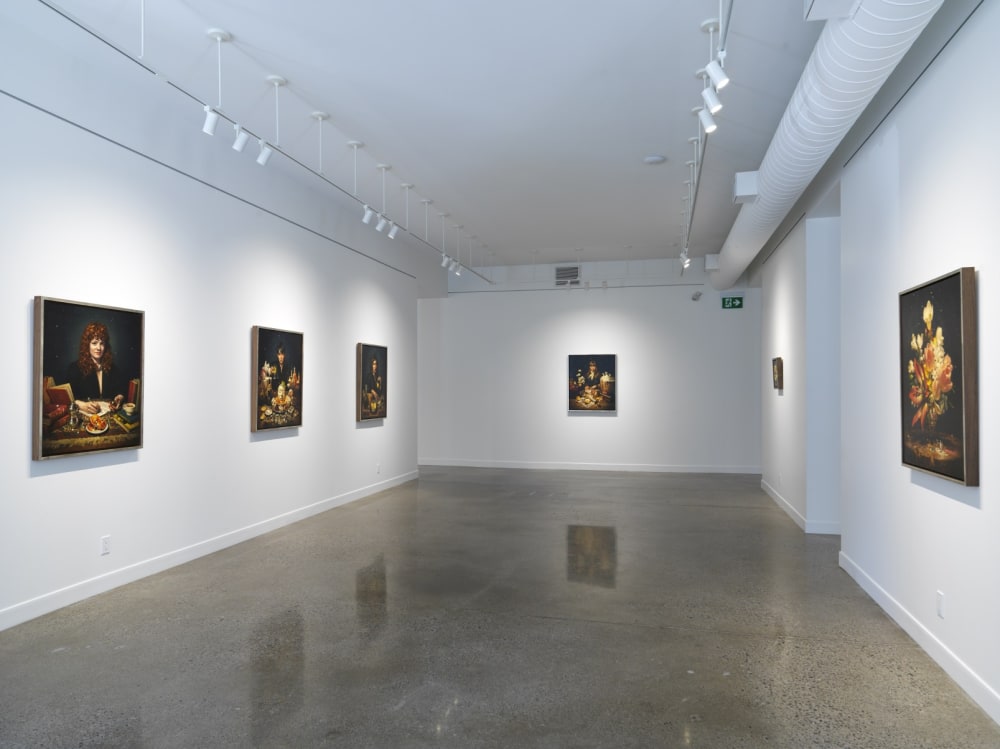Originally from Toronto, Stephen Appleby-Barr has lived in London, England since 2017. He relocated to a new studio in Hackney Wick last year and was quickly welcomed into a close-knit social circle with other residents of the building. The daily meeting place for the group is the window of Appleby-Barr’s first-floor studio which looks out into the building’s courtyard. The opening doubles as a café of sorts that is colloquially referred to as ‘The TAB’ (The Appleby-Barr). Drinks are served but more importantly, ideas are exchanged openly and fluidly. The perspective of looking through the window at his friends, with their various belongings displayed in front of them, is what inspired his latest body of work.
Alignment, referring to Appleby-Barr’s personal set of principles and way of moving through the world, features extraordinary new portraits of his friends captured amid intimate conversations. In front of each subject is an array of carefully curated objects layered with symbolism that is specific to each sitter. In contrast to his earlier portraits where his subjects are often dressed in elaborate period costumes, these latest works suggest a more personal and immediate approach. Male, female and non-binary individuals are wearing their own contemporary clothing and instead of posing as a character in Appleby-Barr’s fantastical universe, they are grounded in their own identities.
If I was to try and describe my work, it’s hard to place. There are so many historically informed nods, winks and nudges, but I don’t put the work in our time, our here, now and past. It’s an elsewhere, a sort of historically non-objective space because it just has to do with my love for the person.
– Stephen Appleby-Barr
Accompanying the portraits are a series of intricate new still lifes. In setting up his compositions for these works, Appleby-Barr takes every opportunity to create a variety of textures and reflections. One of the paintings depicts a silver teapot borrowed from a neighbour that is said to have inspired the tea set in the original Alice and Wonderland film. It rests on top of a piece of white fur, with one of Appleby-Barr’s clay figures holding a dinner bell, reflected in it. Another floral still life reveals a self-portrait in a tiny reflection on the vase. It is the only reference to himself in the exhibition and a nod to the playful tradition typically found in Renaissance painting.

